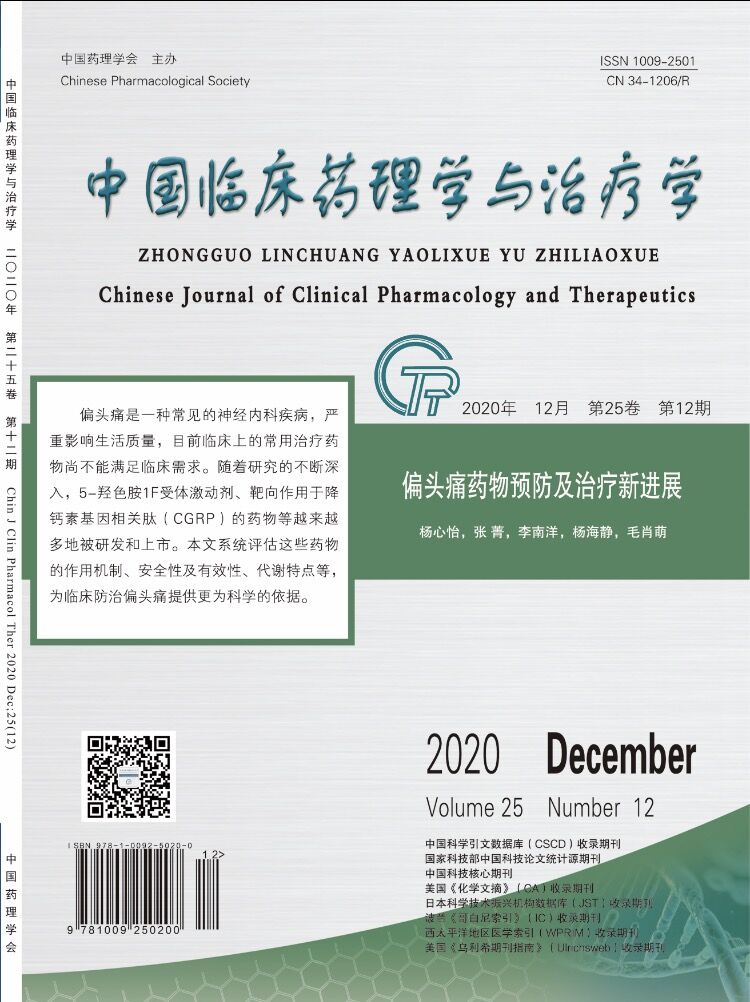Bioequivalence of rosuvastatin calcium tablets in Chinese healthy subjects
Affiliated Hospital of Liaoning University of Traditional Chinese Medicine, GCP Center Phase I Clinical Trial Ward, Shenyang , Liaonning, China
2020, 25(12):
1369-1375.
doi:10.12092/j.issn.1009-2501.2020.12.008
 Asbtract
(
695 )
Asbtract
(
695 )
 PDF (682KB)
(
500
)
Related Articles |
Metrics
PDF (682KB)
(
500
)
Related Articles |
Metrics
AIM: To study the bioequivalence of rosuvastatin calcium tablets produced by two different manufacturers on a fasting and postprandial basis in Chinese healthy subjects. METHODS: A single-center, randomized, balanced, open, two-sequence, two-cycle, double-crossover, and single-dose trial design was used in this study. Each of the fasting group and the postprandial group was enrolled in 52 healthy subjects. Fasting/postprandial oral rosuvastatin calcium tablets 10 mg test preparation or reference preparation, the validated LC-MS/MS method was used to determine the concentration of rosuvastatin calcium tablets in plasma, and the pharmacokinetic parameters were calculated. Human bioequivalence and safety evaluation of two rosuvastatin calcium tablets were evaluated. RESULTS: The t1/2 of the test preparation and the reference preparation in the fasting group were (10.1±3.9) h and (11.4±7.6) h, the tmax was (3.9±1.1) h and (3.9±1.1) h, and the Cmax was (8.4±3.8) ng/mL and (8.3±4.2) ng/mL, AUC0-72 were (75.8±34.7) ng·mL-1·h and (73.2±33.2) ng·mL-1·h, AUC0-∞ were (77.4±34.9) ng·mL-1·h and (75.2±33.2) ng·mL-1·h; the geometric mean ratio of the major pharmacokinetic parameters Cmax, AUC0-72, AUC0-∞ of the 51 subjects included in the BES (test preparation/reference preparation) 90% confidence interval statistical results were acceptable. Within the equivalent range, they were 95.47%-109.71%, 98.68%-110.57%, and 98.31%-109.50%, respectively. The t1/2 of the test preparation and the reference preparation in the postprandial administration group were (16.7±12.8) h and (14.5±5.5) h, the tmax was (3.8±1.5) h and (3.7±1.4) h, and the Cmax was (5.9±2.9) ng/mL and (5.6±2.7) ng/mL, AUC0-72 were (64.0±33.4) ng·mL-1·h and (62.2±32.0) ng·mL-1·h, AUC0-∞ were (67.9±33.5) ng·mL-1·h and (65.5±31.9) ng·mL-1·h. The statistical results of the 90% confidence intervals of the geometric mean ratios (test preparations/reference preparations) of Cmax, AUC0-72, AUC0-∞ were 98.91%-110.68%, 99.70%-108.03%, and 99.83%-108.32%. CONCLUSION: Rosuvastatin calcium test preparation and reference preparation are bioequivalent in fasting and postprandial state. Taking a high-fat meal has no effect on the pharmacokinetic characteristics of Rosuvastatin calcium tablets. Rosuvastatin calcium tablets can be taken with or without food.


